Best Smart Thermostats
Best Overall Smart Thermostat
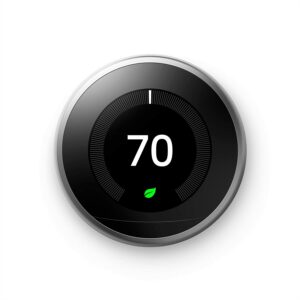
Best Wi-Fi Thermostat (Non-Learning)

Best Z-Wave Thermostat (Learning)
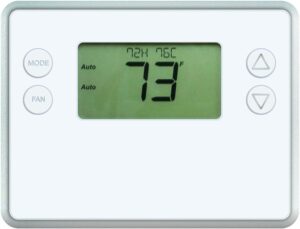
Best Non C-Wire Thermostat
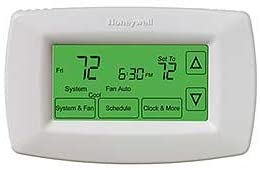
Best Heat Pump Thermostat
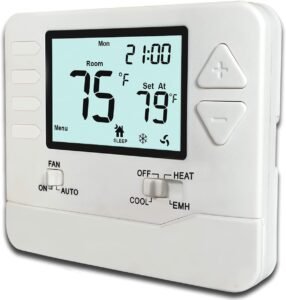
Best Baseboard Heat Thermostat
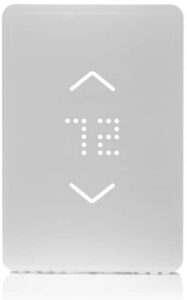
Best Radiant Floor Thermostat
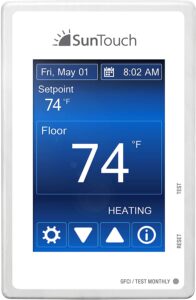
What to look for in a smart thermostat
Installation
A thermostat shouldn’t be difficult to install, even if you’re only moderately handy. The manufacturer should provide comprehensive, yet easy-to-understand instructions with plenty of photographs or illustrations to guide you through the process. The thermostat itself should be clearly indicate which wires go where, and most companies provide labels that you can attach to the wires coming out of the wall as you disconnect and remove your old model. The wires themselves should be color coded, but a good practice is to photograph your old thermostat for reference before you take it down.
Geofencing
This feature uses the thermostat’s app and your smartphone’s GPS chip to establish a perimeter around your home. When you leave the perimeter, you presumably no longer need to heat and cool your home, or you can at least have the thermostat adjust the temperature so that it’s not running unnecessarily. When you cross the perimeter again as you come home, your HVAC system can kick into action so your house is comfortable when you walk in the door.
C-wire requirement
Most smart thermostats require more electrical power than a set of batteries can provide. Fortunately, they don’t require so much power than they need to be plugged into the wall. They rely instead on low-voltage power provided by your HVAC system. Many smart thermostats require the presence of a dedicated C (common) wire for this purpose, while others can siphon electricity from another source, typically the R (power) wire. But the latter practice is known to cause problems with some HVAC systems, including permanent damage. If you pull out your existing thermostat to install a smart model and find no C wire connected to it, look inside the wall to see if there’s one that hasn’t been connected. If there’s no C wire, our advice is to have one installed. Only a couple of the thermostats reviewed here require a C wire, but all the manufacturers highly recommend using one.
Remote access
Remote access enables you to control your thermostat from afar, so that you can check in and adjust the temperature from wherever you have a connection to the internet.
User interface
Long gone are the days when a thermostat’s user interface consisted of numbers on a dial. The more sophisticated a device becomes, the more difficult it can be to learn to use. The last thing you want to be doing is staring at inscrutable hieroglyphics on the wall when all you really want is to be warmer or cooler. A smart thermostat should convey important information at a glance and should easily adapt to your specific needs.
Smart home integration
Every smart thermostat comes with an app so you can control it with your smartphone or tablet, but the best models can also be integrated with other smart-home devices and broader smart-home systems. This can range from being able to adjust the temperature with a voice command via an Amazon Echo or Google Home digital assistant, to linking to your smoke detector so that your fan automatically turns off when fire is detected, preventing smoke from being circulated throughout your home. Other options to consider include IFTTT and Stringify support, Apple HomeKit compatibility, smart-vent connectivity, and tie-ins with home security systems.
Best Overall Smart Thermostat

The Google Nest is one of the most popular smart thermostats on the market. It has a home/away assist mode to automatically adjust the temperature when you leave your house and has remote access through an app so you can control the temp from anywhere using your phone. The app can also send you alerts if something doesn’t seem right or send helpful reminders for maintenance. It’s compatible with 95% of HVAC systems and is easy to install, usually in 30 minutes or less, with everything you need in the box.
Best Wi-Fi Thermostat (Non-Learning)

This Emerson Sensi smart thermostat can save you up to 23% on energy costs and comes with handy features like geofencing, flexible scheduling, and in-app remote access. It’s compatible with smart home systems such as Amazon Alexa and Google Assistant, comes with an app to control the temperature from anywhere using your phone or tablet, and it will send usage reports and smart alerts to detect changes (extreme temps or high humidity levels in your home, etc). The simple 30-minute or less set up makes this an easy option for any homeowner.
Best Z-Wave Thermostat (Learning)

The GoControl Z-Wave smart thermostat is a battery-powered model that is compatible with most central HVAC systems. It can be synced up with your Amazon Alexa for easy adjusting with just a single voice command or with your mobile device using an app. It’s designed for easy installation without needing help from a contractor or electrician and is powered by four AA batteries or connected to a C wire. The GoControl even learns your heating and cooling habits to help save on energy costs by 5-15%.
Best Non C-Wire Thermostat

The Honeywell smart thermostat comes with a 7-day programing to allow you to pre-adjust your temperatures ahead of time. It’s smart response technology allows the thermostat to learn the amount of time needed to reach your desired temperature and adjust accordingly and keep you comfortable at all times. Receive reminders for filter changes or when it has low batteries so you can keep the system running at its best. Installation is a breeze, even for the average homeowner, and is compatible with most systems.
Best Heat Pump Thermostat

The Heagstat heat-pump smart thermostat can be configured with both electric and gas and is compatible with 2 heating, cooling, and heat pump systems. It comes with a 5-1-1 programming so you can set it to adjust the temperature for a full week, even while you’re away or asleep. This system has accurate temperature control of +/- one degree for consistent comfort and reduced energy costs. The dual-powered battery/24VAC low-voltage installation is simple for all homeowners and is great for everyday home use.
Best Baseboard Heat Thermostat

The Mysa smart thermostat is a great option for high line voltage systems, such as 120-240V electric baseboards or fan-forced heaters. It can be integrated with other smart systems such as Amazon Alexa, Google Assistant, or Apple HomeKit to keep you connected throughout your home. The model’s energy efficiency can help save you up to 26% on energy costs and can be easily installed by any homeowner in 15 minutes or less with easy step-by-step guides and videos.
Best Radiant Floor Thermostat

The SunTouch smart thermostat is an easy way to control the floor temperature in your home with an intuitive 7-day schedule to suit your needs. The SmartStart technology automatically adjusts the start time of the floor warming system to ensure it’s reached the set temperature at your scheduled time. Installation is easy with comprehensive help screens and a setup wizard, plus a thin profile touch display with multiple themes to choose from to match any home interior.
FAQs about Smart Thermostats
How do smart thermostats work?
To understand how a smart thermostat works, you’ll first need to understand how regular thermostats works. A thermostat uses temperature to determine when it needs to turn the fan and AC or heat on and off. It actually works kind of like a light switch, except it incorporates temperature and into the equation (to help it determine when to turn the fan, heat, and cool on and off). A typical thermostat has a hot wire, a common wire, a wire that connects to the fan blower, and wires that connects to your HVAC system for heating and cooling. It may also have additional wires for things like auxiliary heat, emergency heat, two-stage heating or cooling, or wires for systems that have separate or standalone AC or heat. When you set a specific temperature on your thermostat, the fan and heat or cool shut off once the internal thermometer reaches the desired temperature. Here’s how to test your thermostat.
Smart thermostats work similarly, except they also connect to the home’s Wi-Fi. This allows you to change the thermostat’s settings remotely using a companion app. When you input a temperature setting into the app, it transmits that setting through your Wi-Fi network to the thermostat, and the thermostat then sends that signal to the blower and HVAC system. When you use a smart speaker like Google Home and say “OK Google, set temperature to 70 degrees,” the Google Home app communicates the command to the thermostat’s companion app, which travels through your Wi-Fi network to the thermostat. It all happens so quickly that you’ll probably never notice all of components involved in simply adjusting the temperature in your home.
How can smart thermostats save you money?
Smart thermostats save you money simply by cooling and heating the home only as much as needed. Using features like learning, scheduling, geofencing, by diagnosing problems with the system, and by reminding you of when it’s time to perform maintenance, your HVAC system runs more efficiently and uses less energy. Room sensors can also reduce energy consumption by heating and cooling specific areas more accurately.
What’s the difference between a smart thermostat and a programmable thermostat?
A programmable thermostat allows the user to input schedule and program settings. A smart thermostat is a step up from a programmable thermostat, as it typically allows the user to program desired settings and it connects to Wi-Fi for more advanced features and functionality.

